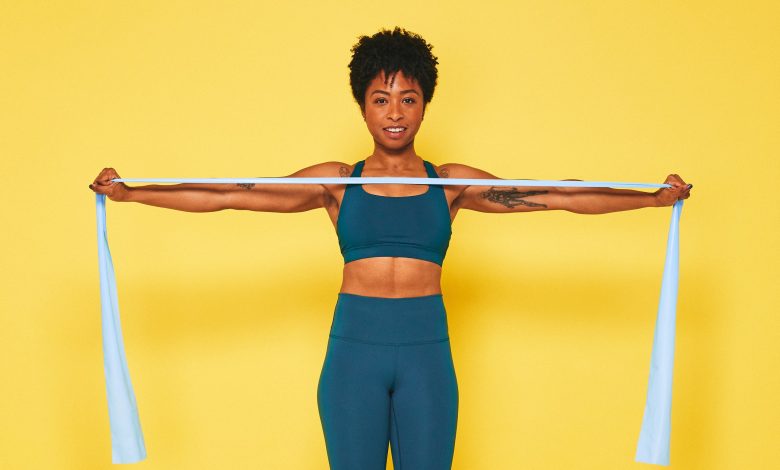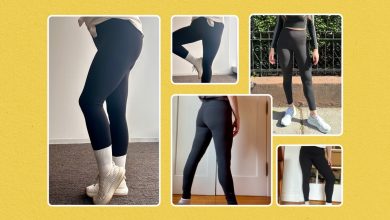15 Resistance Band Exercises to Work Your Entire Body

When you picture strength training, moves with dumbbells, kettlebells, and barbells likely come to mind. But slotting in resistance band exercises is another way to effectively fire up your muscles. And, with tons of options to choose from, it’s possible to hit your entire body with these elastic tools.
Plus, bands offer some pretty awesome benefits that you won’t get from picking up free weights, making them a compelling add to most any exerciser’s routine.
Curious to know more? We tapped two fitness pros to learn just how effective these stretchy devices can be, what you can gain from weaving them into your routine, and a whole host of awesome band exercises to try—plus a quick, four-move resistance band workout routine to tie it all together. So grab your nearest pack of ‘em and get ready to work!
Can you get an effective workout with resistance bands?
We’ll cut straight to the chase: Yes, you can definitely get a good workout using resistance bands, Susie Reiner, PhD, CSCS, a certified exercise physiologist and post doctoral researcher at the University of Kentucky’s Sports Medicine Research Institute and the founder of TheoryEx, tells SELF. This is true no matter what type of band you’re using—whether it’s a traditional resistance band (a long, wide one you can either tie together in a loop or grip the ends with both hands to do tons of different moves); a looped band (a long circular one that’s often used for big compound exercises like deadlifts and squats); a band with handles (one that’s got grips on each end for your hands, ideal for upper-body moves like chest presses and flies), or a mini band (a smaller circular band that you typically place around your ankles or above your knees for exercises like clam shells and lateral leg lifts).
Though they may seem flimsy compared to dumbbells or kettlebells, resistance bands add mechanical tension to your muscles, just like free weights or machines do, Dr. Reiner explains. And any time you tack on that tension, you’re helping your muscles to adapt and get stronger over time, which is the whole point of strength training. The one caveat: You need to use resistance that delivers enough of a challenge to your muscles to spur these changes, Katie Pierson, CPT, a Montana-based certified personal trainer, spin instructor, and contributor at Indoor Cycling Love, tells SELF. Otherwise, you risk plateauing, she explains. So if, by the end of your reps, your muscles don’t feel fatigued, that’s a sign to level up, she says, which you can do by picking up a thicker band, as those usually offer more resistance than thinner ones.
In that vein, if you stick with bands for the long haul, you’ll likely eventually reach a point where they can no longer provide the challenge your muscles need to grow bigger and stronger, as SELF previously reported. Because of that, “resistance bands don’t replace traditional strength building methods, especially if you’re trying to maximize strength and maximize power,” Dr. Reiner says. But before you reach that juncture? They’re a good way to level up the intensity of bodyweight moves, Reiner says. And they offer a whole bunch of other benefits too. Speaking of…
What are some benefits of resistance band exercises?
One of the biggest perks is the bands themselves are really accessible, which makes them easy to use consistently. “What helps people continue exercising is having something that you can do from anywhere, that there are no barriers to,” Dr. Reiner says. And in that sense, bands certainly fit the bill: They’re lightweight and non-bulky, which makes them easy to toss in your bag and use on the go. And, they’re cost effective—a pack of mini bands, for example, is just $6 on Amazon. “Not everybody can purchase a set of dumbbells, or adjustable dumbbells, but a lot of people can afford a set of bands,” says Pierson.


